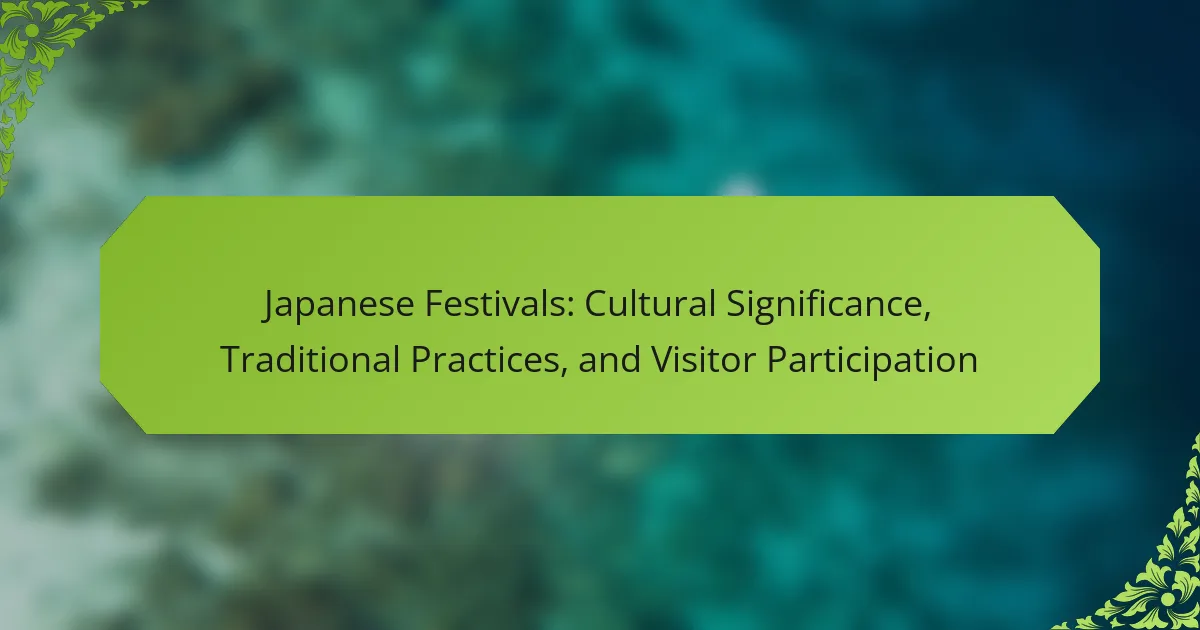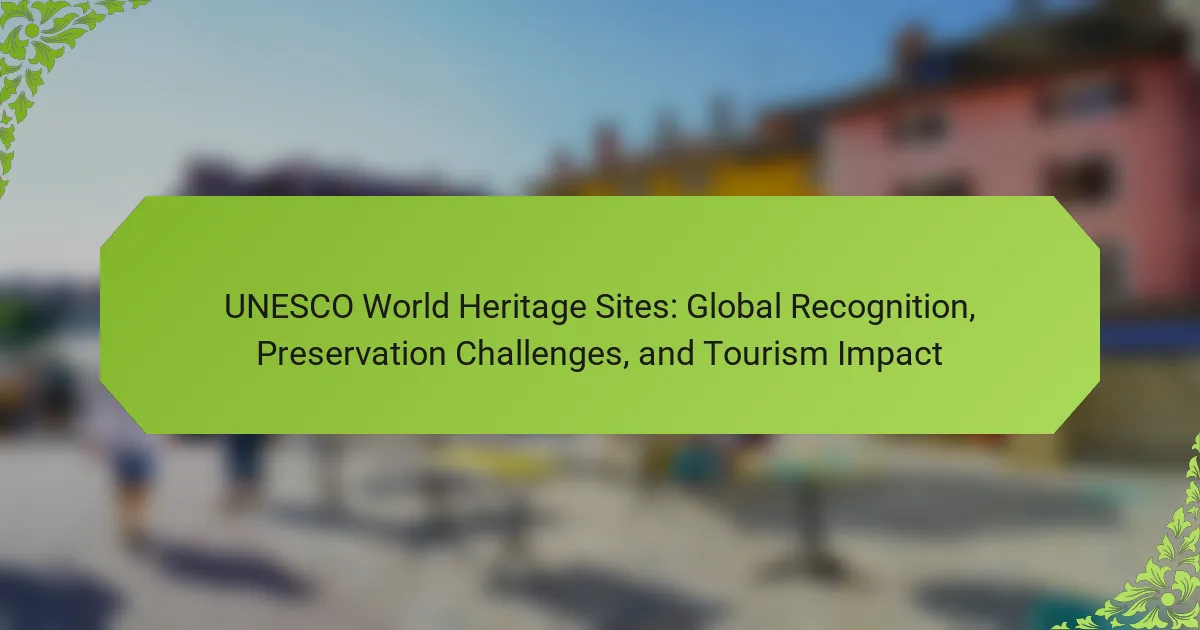Japanese festivals offer a unique opportunity to engage with Japan’s rich cultural heritage. They highlight community values, traditional practices, and visitor participation. Key festivals like the Cherry Blossom Festival, Gion Matsuri, and Tanabata showcase distinct customs and rituals. Understanding these events deepens appreciation for Japan’s vibrant cultural narrative.
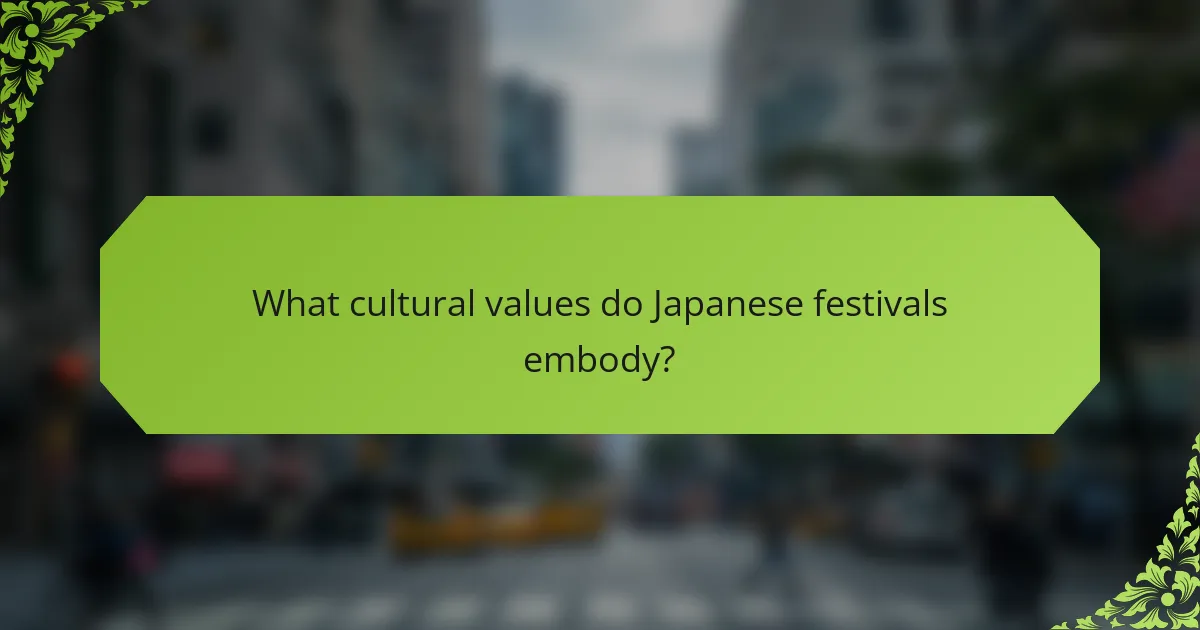
What cultural values do Japanese festivals embody?
Japanese festivals embody core cultural values such as community, tradition, and spirituality. These events foster social bonds, celebrate seasonal changes, and honor ancestral spirits. Festivals often feature rituals, music, and dance, reflecting the unique attributes of local customs. For example, the Gion Matsuri in Kyoto emphasizes purification and gratitude, showcasing Japan’s deep-rooted respect for nature and harmony. Participation in these festivals allows visitors to engage with and appreciate the rich cultural heritage of Japan.
How do festivals reflect local community identities?
Japanese festivals embody local community identities through shared traditions, cultural expressions, and social cohesion. These events highlight unique attributes such as historical significance, regional customs, and communal participation. For instance, the Gion Matsuri in Kyoto showcases the city’s rich heritage, while the Nebuta Matsuri in Aomori reflects local folklore. Festivals foster a sense of belonging, allowing residents to celebrate their cultural roots and engage with visitors, enhancing community pride and cultural exchange.
In what ways do festivals promote traditional Japanese beliefs?
Festivals promote traditional Japanese beliefs through rituals, community participation, and cultural expression. They serve as a medium to transmit values such as respect for nature, ancestor worship, and seasonal changes. Events like Matsuri incorporate Shinto practices, showcasing offerings to deities and honoring local spirits. Additionally, festivals foster social cohesion, allowing communities to celebrate shared heritage and reinforce cultural identity. The vibrant displays of traditional costumes, music, and dance further enhance the connection to Japan’s rich history and spiritual beliefs.

Which key festivals are celebrated across Japan?
Japan celebrates numerous key festivals that reflect its rich cultural heritage. Notable festivals include the Cherry Blossom Festival, Gion Matsuri, and Tanabata.
The Cherry Blossom Festival, celebrated in spring, signifies the beauty of transient life. Gion Matsuri, held in July in Kyoto, features elaborate floats and traditional clothing, emphasizing community participation. Tanabata, celebrated in July, involves writing wishes on colorful strips of paper, showcasing hopes and dreams.
These festivals attract visitors worldwide, offering unique experiences and insights into Japanese traditions.
What are the highlights of the Gion Matsuri in Kyoto?
The Gion Matsuri in Kyoto features vibrant parades, elaborate floats, and traditional performances. Celebrated throughout July, it showcases the cultural heritage of Japan. Key highlights include the Yamaboko Junko procession, where ornate floats are pulled through the streets, and the Aoi Matsuri, emphasizing ancient rituals. Visitors can participate in various events, experiencing the festive atmosphere and local cuisine. The festival’s roots trace back to the 9th century, reflecting the community’s devotion and unity.
How is the Nebuta Matsuri in Aomori uniquely celebrated?
The Nebuta Matsuri in Aomori is uniquely celebrated through vibrant, large floats and dynamic performances. These floats, intricately designed and illuminated, depict historical and mythological figures. Participants dress in traditional attire and engage in lively dances, creating a communal atmosphere. The festival emphasizes local culture, showcasing Aomori’s rich heritage and artistry. Unique to this event is the use of the “haneto” dancers, who encourage audience participation, fostering a sense of unity.
What makes the Tanabata Festival significant in various regions?
The Tanabata Festival holds significant cultural importance across various regions in Japan, reflecting local traditions and community values. In Sendai, the festival features elaborate decorations and parades, celebrating the meeting of the star-crossed lovers Orihime and Hikoboshi. In Hiratsuka, the focus is on vibrant street festivities and competitions, showcasing local crafts and food. Meanwhile, in Takamatsu, the emphasis is on traditional performances and rituals, enhancing community participation. Each region’s unique interpretation of Tanabata highlights distinct attributes, fostering regional pride and cultural identity.
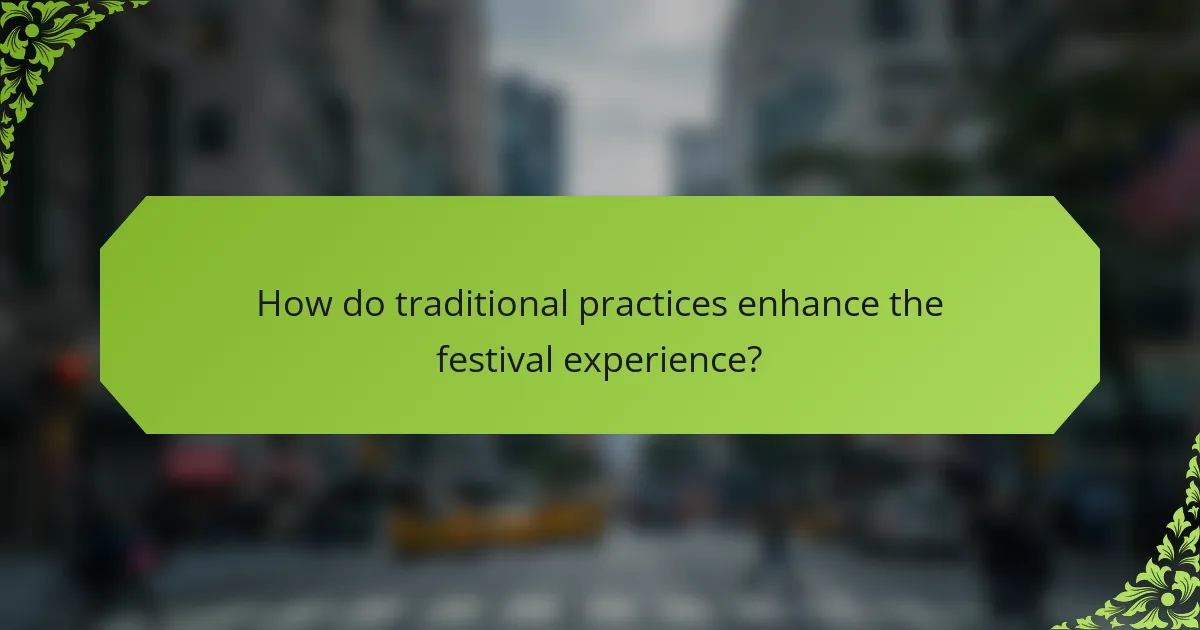
How do traditional practices enhance the festival experience?
Traditional practices significantly enhance the festival experience by fostering community engagement and preserving cultural heritage. Rituals such as traditional dances, music performances, and food offerings create a vibrant atmosphere that attracts visitors. These practices also promote a sense of belonging among participants, as they actively contribute to the celebration. For instance, the preparation of local delicacies showcases regional flavors, enriching the overall experience. Additionally, the incorporation of age-old customs emphasizes the festivals’ historical significance, allowing attendees to connect with Japan’s rich cultural narrative.
What rituals are commonly observed during Japanese festivals?
Japanese festivals commonly observe rituals such as purification, offerings, and traditional performances. These practices enhance spiritual connections and celebrate cultural heritage. For example, purification rituals often involve water cleansing, while offerings may include food or sake to deities. Traditional performances, like dances and music, engage both participants and spectators, fostering community spirit. Additionally, unique attributes like the use of specific masks or costumes can vary by region, enriching the festival experience.
How do food and drink play a role in festival celebrations?
Food and drink are central to Japanese festival celebrations, enhancing cultural significance and community engagement. Traditional dishes like mochi and sake symbolize hospitality and joy. Local specialties often reflect regional identity, fostering pride among participants. Seasonal ingredients contribute to the authenticity of festival cuisine, making each event unique.
What types of performances are featured at festivals?
Japanese festivals feature a variety of performances that showcase cultural traditions. Common types include traditional dance, music, theatrical plays, and martial arts demonstrations. These performances often reflect regional heritage and seasonal celebrations. For example, the Awa Odori dance is a highlight of the Tokushima Festival, emphasizing community participation and joy. Additionally, festivals may include parades with elaborate floats, further enriching the cultural experience for visitors.
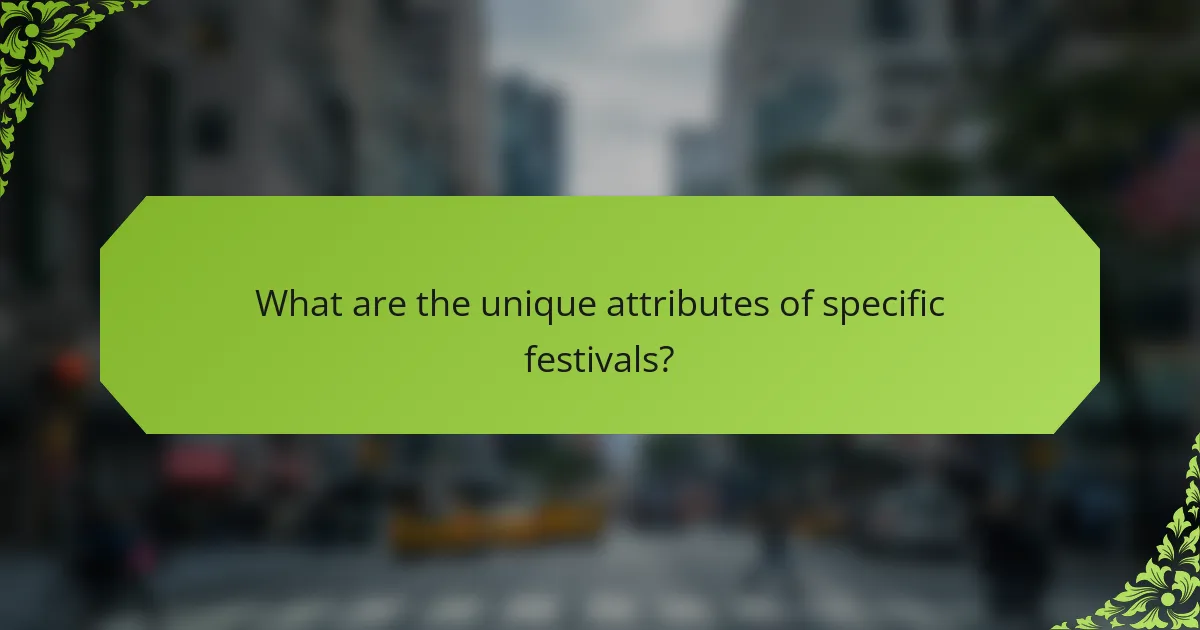
What are the unique attributes of specific festivals?
Japanese festivals possess unique attributes that highlight their cultural significance and traditional practices. These festivals often feature vibrant parades, elaborate costumes, and age-old rituals. For example, the Gion Matsuri in Kyoto showcases stunning floats and community participation, reflecting local history. Unique attributes include the seasonal timing of festivals, which align with agricultural cycles, and the specific deities worshipped, such as in the Aoi Matsuri. Additionally, rare attributes like regional variations in festival celebrations showcase the diversity of Japanese culture. Overall, these festivals foster community bonds and attract visitors, enriching cultural appreciation.
How does the Sapporo Snow Festival differ from other winter festivals?
The Sapporo Snow Festival is unique due to its stunning snow and ice sculptures, unlike many winter festivals that focus on cultural performances or food. It features large-scale installations created by artists and local communities, showcasing creativity and craftsmanship. Additionally, the festival attracts millions of visitors, enhancing its significance as a major winter tourism event in Japan. Unlike typical winter festivals, which may last a weekend, the Sapporo Snow Festival spans over a week, allowing for extensive visitor participation and engagement.
What rare traditions are found in the O-bon Festival?
Rare traditions in the O-bon Festival include the practice of “Mukaebi,” where families light bonfires to guide spirits home. Another unique tradition is the “Toro Nagashi,” where floating lanterns are released on rivers to honor the deceased. Additionally, some regions perform “Bon Odori,” a traditional dance that varies in style and significance across Japan. These customs reflect the festival’s deep cultural roots and the unique ways communities celebrate their ancestors.
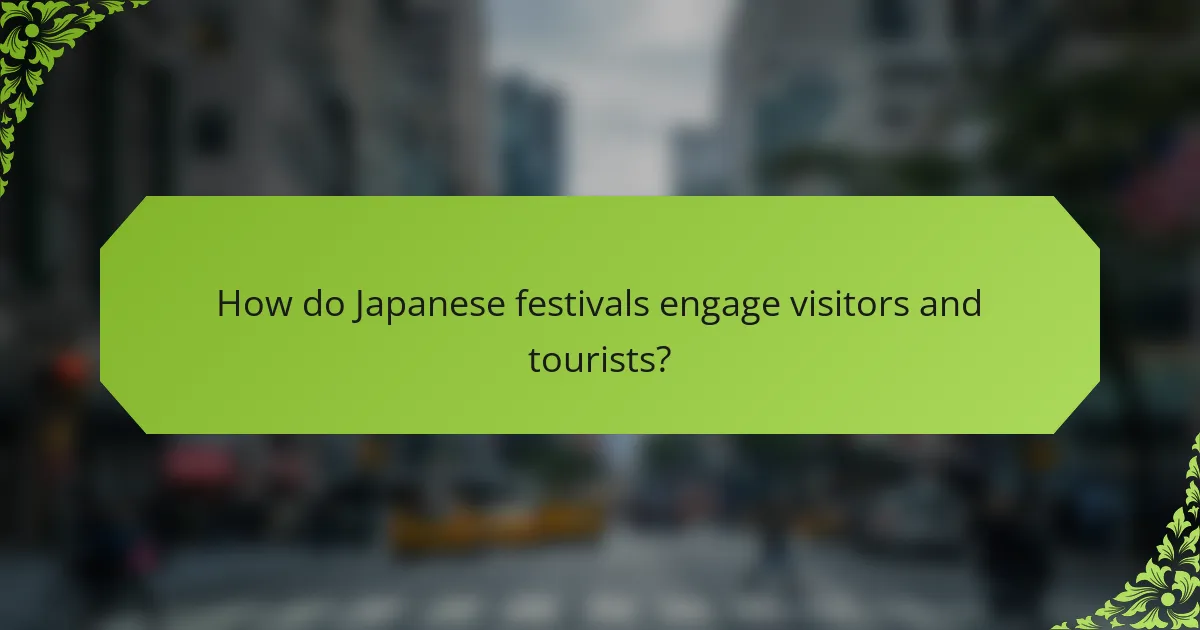
How do Japanese festivals engage visitors and tourists?
Japanese festivals engage visitors and tourists through immersive cultural experiences and traditional practices. These events showcase unique attributes like local customs, food, and performances, fostering community interaction. Visitors participate in activities such as parades, workshops, and rituals, enhancing their understanding of Japanese culture. Festivals often feature rare elements, like ancient rituals or regional specialties, making each event distinct and memorable. Overall, the vibrant atmosphere and rich heritage attract tourists, promoting cultural exchange and appreciation.
What opportunities exist for cultural immersion during festivals?
Japanese festivals offer numerous opportunities for cultural immersion through traditional practices, local cuisine, and community engagement. Visitors can participate in activities such as wearing yukata, joining parades, and experiencing local rituals. Festivals like Gion Matsuri in Kyoto showcase unique attributes such as elaborate floats and historical significance. Engaging with locals during these events enhances understanding of Japanese culture and strengthens community ties. Additionally, sampling regional foods provides insight into culinary traditions, making festivals a rich experience for cultural exploration.
How can visitors respectfully participate in local customs?
Visitors can respectfully participate in Japanese festivals by observing local customs and engaging thoughtfully. Understanding the significance of rituals enhances appreciation. Dress appropriately, often in traditional attire, and follow guidelines for participation. Respectful behavior includes refraining from disruptive actions and being mindful of sacred spaces. Engaging with locals and asking questions shows genuine interest.
What are the best practices for attending a Japanese festival as a foreigner?
To attend a Japanese festival as a foreigner, embrace local customs and show respect. Dress appropriately, ideally in traditional attire like a yukata. Familiarize yourself with festival etiquette, such as bowing and expressing gratitude. Engage with locals and participate in activities, enhancing your experience and understanding of cultural significance. Always be mindful of photography rules and ask for permission when capturing moments.
What common mistakes should visitors avoid during festivals?
Visitors to Japanese festivals should avoid common mistakes to fully appreciate the cultural significance. Key errors include disrespecting traditions, failing to dress appropriately, and neglecting to try local foods.
Disrespecting traditions can manifest as inappropriate behavior or ignoring festival etiquette. Dressing inappropriately detracts from the experience; wearing traditional clothing enhances participation. Neglecting local foods misses an opportunity to engage with the festival’s culinary heritage.
Additionally, not respecting personal space can lead to discomfort among participants. Ignoring event schedules may result in missing key activities. Lastly, failing to learn basic Japanese phrases can hinder interactions and diminish the experience.
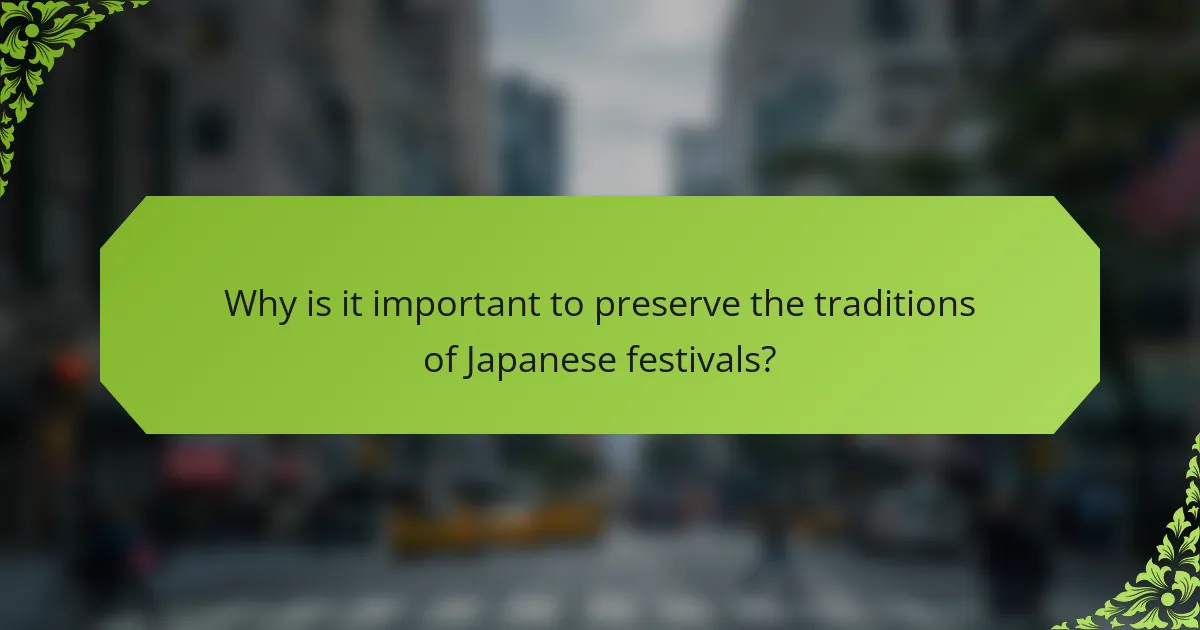
Why is it important to preserve the traditions of Japanese festivals?
Preserving Japanese festivals is crucial for maintaining cultural heritage and community identity. These festivals embody traditional practices, stories, and values that connect generations. They promote social cohesion and foster respect for history. Additionally, visitor participation enhances cultural exchange, supporting local economies and tourism.
How do festivals contribute to cultural heritage and tourism?
Japanese festivals significantly enhance cultural heritage and tourism by showcasing traditional practices and fostering community engagement. These events celebrate historical events, local customs, and seasonal changes, attracting visitors worldwide.
Festivals like Gion Matsuri and Tanabata not only preserve ancient rituals but also promote local crafts and cuisine. For example, Gion Matsuri features elaborate floats that reflect Kyoto’s artistic heritage.
Visitor participation enriches the experience, allowing tourists to engage with locals and learn about cultural significance firsthand. This interaction fosters appreciation for Japanese traditions and encourages repeat visits.
As a result, festivals serve as vital economic drivers, boosting local businesses and enhancing the overall tourism experience. They create a sense of identity and continuity, ensuring cultural practices are passed down through generations.
What role do local governments play in festival organization?
Local governments play a crucial role in organizing Japanese festivals by providing funding, resources, and logistical support. They collaborate with local communities to preserve cultural heritage and enhance visitor experiences. Local governments also ensure safety regulations are met and promote festivals to attract tourism. This involvement fosters community engagement and strengthens cultural identity.
How can communities ensure the sustainability of their festivals?
Communities can ensure the sustainability of their festivals by prioritizing eco-friendly practices and local engagement. Implementing waste reduction strategies, utilizing renewable resources, and fostering collaboration among local businesses can enhance cultural significance. Engaging visitors in traditional practices, such as workshops or volunteer opportunities, promotes participation and connection. Additionally, evaluating the economic impact of festivals encourages ongoing support and adaptation to changing community needs.

What are the future trends for Japanese festivals in a globalized world?
Japanese festivals will increasingly blend traditional practices with global influences, enhancing cultural exchange. Technology will play a significant role, with virtual participation and social media promoting wider engagement. Sustainability will become a priority, as festivals adopt eco-friendly practices to attract environmentally conscious visitors. Additionally, the rise of international tourism will encourage festivals to cater to diverse audiences, creating unique experiences that honor local heritage while embracing global trends.
How are modern influences reshaping traditional festival practices?
Modern influences are transforming traditional Japanese festival practices by integrating technology, global trends, and evolving social values. Festivals now feature digital marketing strategies, enhancing visitor engagement through social media and interactive experiences. Additionally, international cultural exchanges introduce new elements, enriching traditional festivities. The emphasis on sustainability is reshaping event planning, with eco-friendly practices becoming prevalent. These changes reflect a dynamic adaptation while preserving core cultural significance.
What impact does digital technology have on festival participation?
Digital technology enhances festival participation by facilitating engagement, information sharing, and accessibility. Online platforms allow visitors to discover events, purchase tickets, and connect with others. Social media amplifies cultural significance, showcasing traditional practices and attracting diverse audiences. Additionally, mobile apps improve visitor experiences with real-time updates and personalized itineraries. These innovations increase attendance and foster community involvement, making festivals more inclusive and vibrant.
How can festivals adapt to changing societal values?
Festivals can adapt to changing societal values by incorporating inclusive practices and sustainability. Many Japanese festivals are evolving to reflect modern values such as environmental consciousness and diversity. For instance, organizers are increasingly implementing eco-friendly measures, like waste reduction and local sourcing of materials. This change not only aligns with global sustainability trends but also attracts a broader audience. Additionally, festivals are embracing cultural inclusivity, inviting diverse communities to participate and share their traditions. This approach enriches the festival experience and fosters a sense of belonging among visitors.
What expert tips can enhance your festival experience in Japan?
To enhance your festival experience in Japan, immerse yourself in local customs and engage with the community. Participate in traditional activities, try regional foods, and respect cultural practices. Arriving early allows you to explore and secure good viewing spots. Dress appropriately to blend in and enjoy the atmosphere.
